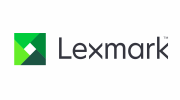BBVA has the capability, knowledge and experience to provide its customers with top-quality advice on sustainable finance solutions in both bonds and loans, and is playing a key role in developing both markets. Bonds and loans are financing instruments used at one moment or other by companies during the course of their existence. These are two conceptually different credit products that are sometimes confused. It is important to differentiate between both means of financing and understand their characteristics in order to know their true essence. With the appointment of an administrator or liquidator, assets covered by the debenture are transferred to the lender.
A prudent lender may insist on securing the loan on one or more assets of the company because a secured creditor has the right to be paid before unsecured creditors in the event that a company is liquidated. Debentures are financial cornerstones offering companies and investors valuable financing and investment opportunities. Their path of debentures is mainly influenced by market trends, which can sometimes be favourable or unfavourable.
A debenture is a long-term debt instrument issued by corporations and governments to secure fresh funds or capital. There is no collateral or physical assets required to back up the debt, as the overall creditworthiness and reputation of the issuer suffice. A debenture represents a type of long-term debt instrument issued by a company or government, typically with a fixed interest rate and maturity date. While debentures share similarities with loans, they are distinct in that they are usually unsecured and are backed by the general creditworthiness of the issuer rather than specific assets.
We specialize in Commercial Bridge Loans, Permanent Loans, Construction Loans, SBA and USDA Loans
- Debentures don’t have any collateral backing them up, so the credit rating of the company or government issuing them is especially important.
- With a debenture, especially a fixed-rate one, your return doesn’t change depending on the company’s profits.
- Since the entities issuing debentures are often governments or large corporations, investors assume the borrower is good for the money.
- (c) we may (after consultation with the Issuer) arrange for the adjourned meeting to be held in accordance with the virtual procedures for meetings and written resolutions set out in this Schedule.
- While this can be arguably a pro or a con depending on the circumstances, the investor base for bank debt is comprised of commercial banks, hedge funds/credit funds (often opportunistic investments), and collateralized loan obligations (“CLOs”).
In addition to loans from a bank or other lender, they are often able to issue bonds and commercial paper. As long as the borrower fulfills their obligations, typically by making monthly payments of at least a certain minimum amount, the line of credit remains available for as long as the account is active. Over time, with a favorable repayment history, the amount of revolving debt that’s available to the borrower may increase. Instead, the lender decides whether to grant a loan based on the borrower’s creditworthiness, as indicated by their credit score, credit history, and other factors.
What’s the difference between loan and debt?
Difference Between Debts and Loans
At the outset, there is no major difference between the two as loans are a part of debt and the amount of money borrowed needs to be repaid in both cases. However, there could be differences in terms of the nature of the loan or debt availed, repayment terms, etc.
Activity 6 Sources of finance for small and medium-sized businesses
The lien is a legal claim against the assets of a borrowing company (i.e. used as collateral) and the right to seize those assets first in forced liquidation/bankruptcy scenarios. The final pro for bank debt is how they are generally confidential, which can be difference between debenture and loan favorable to borrowers who want to limit the amount of publicly disclosed information. There are a number of ways that bank debt can be structured that end up being a fit for both the bank and the borrower.
The assets of the borrower were pledged as collateral to get favorable financing terms, so if the borrower were to be liquidated, the bank lenders have a legal claim on the pledged collateral. Unlike bonds, bank debt is priced at a floating rate, meaning that its pricing is tied to a lending benchmark, most frequently LIBOR plus a specified spread. The primary examples of bank debt (often called secured loans) include the revolving credit facility (“revolver”) and term loans.
Is loan stock a debenture?
Regular debentures act as loans against the company, which make the owner of the debenture a creditor with preferred status in case of liquidation. Debenture stocks are an equity security, not a loan.
Basic Understanding of Debentures
- The finance house will always insist that the hirer should pay a deposit towards the purchase price.
- A debenture is an unsecured investment, meaning it doesn’t have the backing of any collateral.
- An example would be a leverage covenant such that Debt / EBITDA is no more than 3.0x at the end of each fiscal quarter.
- Similarly, conventional insolvency proceedings are not available in respect of a local authority.
- FCA means the Financial Conduct Authority of 12 Endeavour Square London E20 1JN and any successor or replacement regulatory authority or body from time to time.
Get instant access to video lessons taught by experienced investment bankers. Learn financial statement modeling, DCF, M&A, LBO, Comps and Excel shortcuts. As a result, the bonds must be redeemed following a calculation that ensures a hefty premium to the current market price of the bonds. Regardless of the change in interest rates, the cost of debt is unchanged for the borrower. Corporate bonds can even extend out as long as 30+ years in certain instances, as these are negotiated to satisfy the needs of both parties. The benefit to corporations is that they can be unrestrained in terms of what they can (and cannot) do from an operational and financial standpoint.
Therefore, these may carry relatively higher interest rates than otherwise similar bonds from the same issuer that are backed by collateral. Here, the risk is that the debt’s interest rate paid may not keep up with the rate of inflation. Should the debenture coupon pay at 2%, the holders may see a net loss, in real terms. Most often, it is as redemption from the capital, where the issuer pays a lump sum amount on the maturity of the debt.
This rate can be either fixed or floating and depends on the company’s credit rating or the bond’s credit rating. Debentures may also be either convertible or non-convertible into common stock. In the secondary market through a financial institution or broker, investors can buy and sell previously issued bonds.
Many times, the first mortgage lender will provide the bridge loan, and if you’re working with Pursuit, our team will help to facilitate this for you. For a commercial real estate transaction, this is where the property/title changes from the seller to the buyer. The funds at closing come from the bank’s first mortgage, your down payment or equity, and the remaining portion that will ultimately be funded by the SBA 504. Traditional lenders, such as banks, commonly use debentures when providing high-value funding to larger companies.
Are debentures always fully paid up?
Answer: False. Debentures are not always fully paid up.






















